Yellow Jacket Removal and Control
Yellow Jacket Removal and Control
Usually found nesting in the ground (Ground Bees), yellow jackets are probably one of the most aggressive stinging insects. The yellow jacket gets its name from its yellow and black color pattern. These social insects range in size from 3/8 to 3/4 inch, depending on species, and typically nest in one of four places: in the ground, within shrubs or trees, under decks, or inside of your home’s walls. If you've discovered a yellow jacket nest on your property, call The Bee Man today.
Identifying Yellow Jackets
Find out how to identify yellow jackets.
- Yellow and black ranging in size from 3/8 to 3/4 inch
- Most commonly found nesting in the ground (aka “ground bees”)
- Will nest in home’s wall voids, under decks, and in shrubs and trees
- Exterior, aerial nests are gray, semi-round, upside-down teardrop shaped with a single entrance
- Highly aggressive; will sting repeatedly
Contact The Bee Man today.
Aerial Yellow Jackets
Nests in shrubs, trees, underneath elevated decks, and overhangs of home. These are the most aggressive of all stinging insects; all aerial yellow jacket removals should be left to a professional. Although it usually only takes a small vibration to provoke an attack from this species of yellow jacket, I have been swarmed by them after simply approaching the nest.
Protecting a nest of 1,000 to 4,000 workers at its full maturity, the aerial yellow jacket will attack in great numbers and sting repeatedly until the perceived threat has left. Aerial yellow jackets nest outdoors, often attaching their nests to shrubs, bushes, houses, garages, sheds, overhangs, and under elevated decks.
As a second-generation stinging insect specialist, I have done thousands of bee, hornet, wasp, and yellow jacket removals. One thing is for certain, aerial yellow jacket removals are by far the most intense. This particular type of yellow jacket always seems to situate its nests in areas that make it hard for one to reach without first alarming the nest's occupants.
This can be anywhere from an elevated recessed corner of a structure with a great vantage point on the ground below to being intertwined within a thick shrub or bush using the surrounding vegetation like trip wires that trigger an attack. What can best be described as black and yellow water, aerial yellow jackets will pour from the nest after being alarmed, making this particular type of yellow jacket removal quite tricky and, if not properly performed, extremely dangerous.
Regardless of the species, yellow jackets in general are very aggressive and will attack in great numbers if a threat is perceived. This may be as innocent as a bump to the nest from a lawn tool, a child's toy, or the vibrations from a nearby lawn mower. If a nest is located, it is best to steer clear of it until I arrive, particularly if you or others in the area are allergic. To learn more, call (724) 935-5444.
German Yellow Jackets
Have bees in your wall or ceiling? There's a good chance you have a nest of German yellow jackets. These have to be one of the most dangerous stinging insects I deal with. It’s not that German yellow jackets’ stings are any more lethal or that they are any more aggressive than other yellow jackets. German yellow jackets are dangerous simply because of where they choose to construct their nest - in your home’s walls.
The German yellow jacket enters the home through a seam or hole, typically where building materials meet or overlap. When a suitable wall void is found, the queen begins the construction of a nest using a paper-like material she makes by chewing wood. As the nest grows, so must the space the nest occupies; to increase this limited space, the yellow jacket workers will chew through the drywall or plaster of a home's walls...often causing the nest to burst into the home’s living quarters. This can happen at any time during the day and is particularly dangerous if it happens at night, especially if the occupants are highly allergic.
If you think you may have a German yellow jacket nest, you mustn't plug or spray the nest’s entrance! This will only alarm the yellow jackets and force them further into the house.
Homeowners spraying the entrance of the German yellow jackets' nest (the hole or crack in the outside of the home) with an over-the-counter liquid or foam "Bee Spray" is the single most common mistake I see. The successful treatment of German yellow jackets not only requires proper tools and materials, but experience and expertise as well. Any attempt at this dangerous and involved procedure should always be done by a stinging insect specialist. Do not spray or block the nest's entrance! It never works!
Get in touch with The Bee Man to take care of the nest!
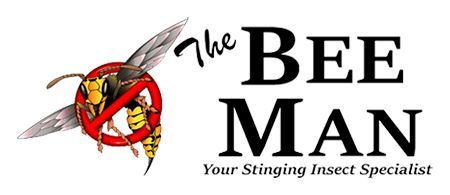

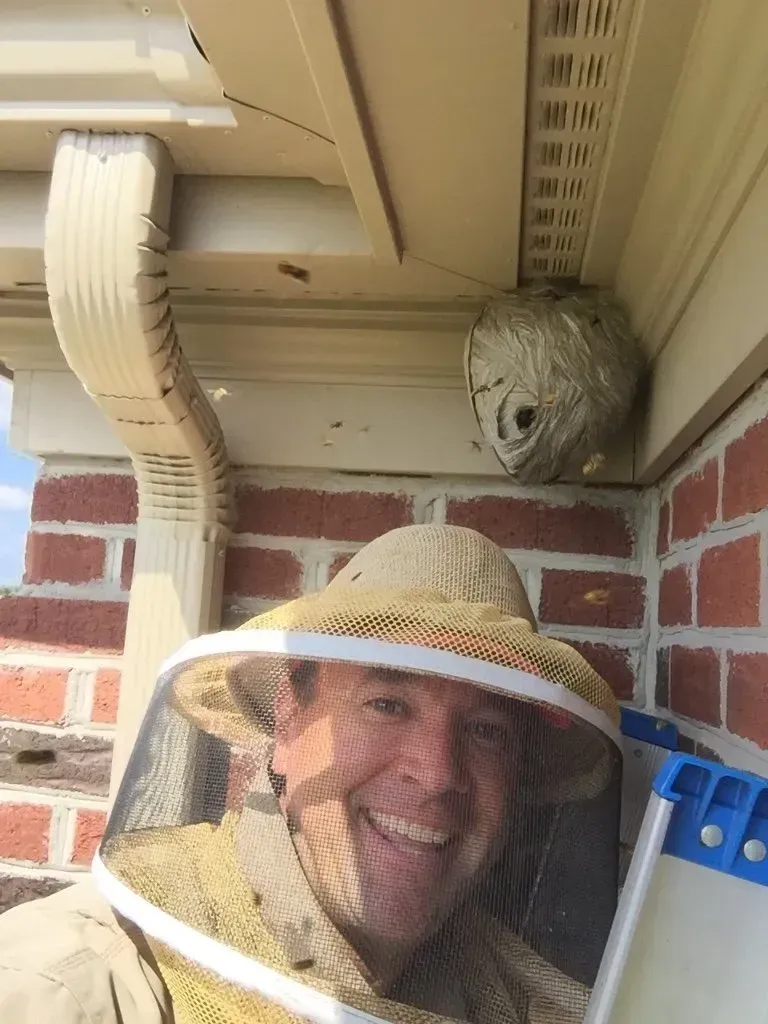
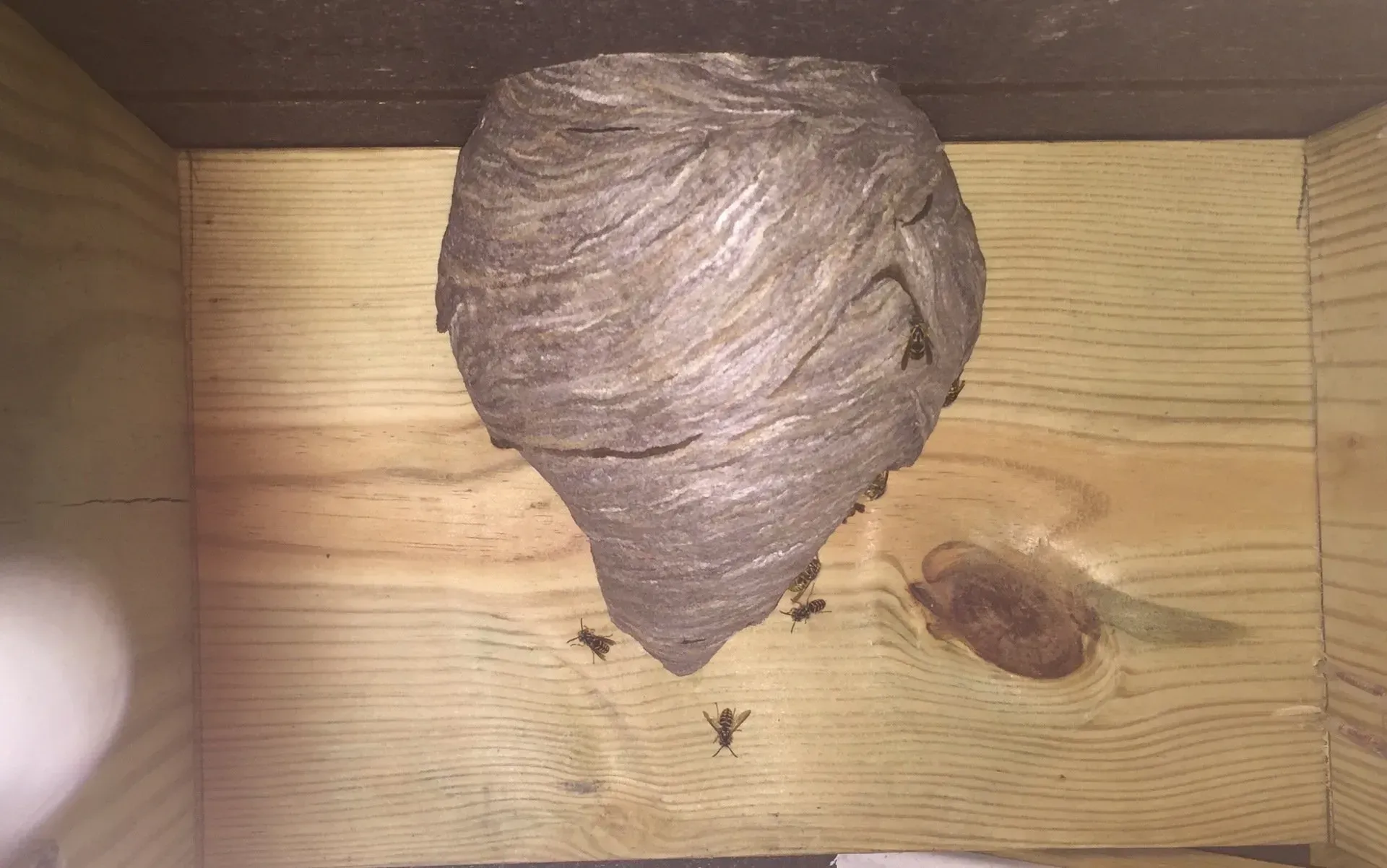
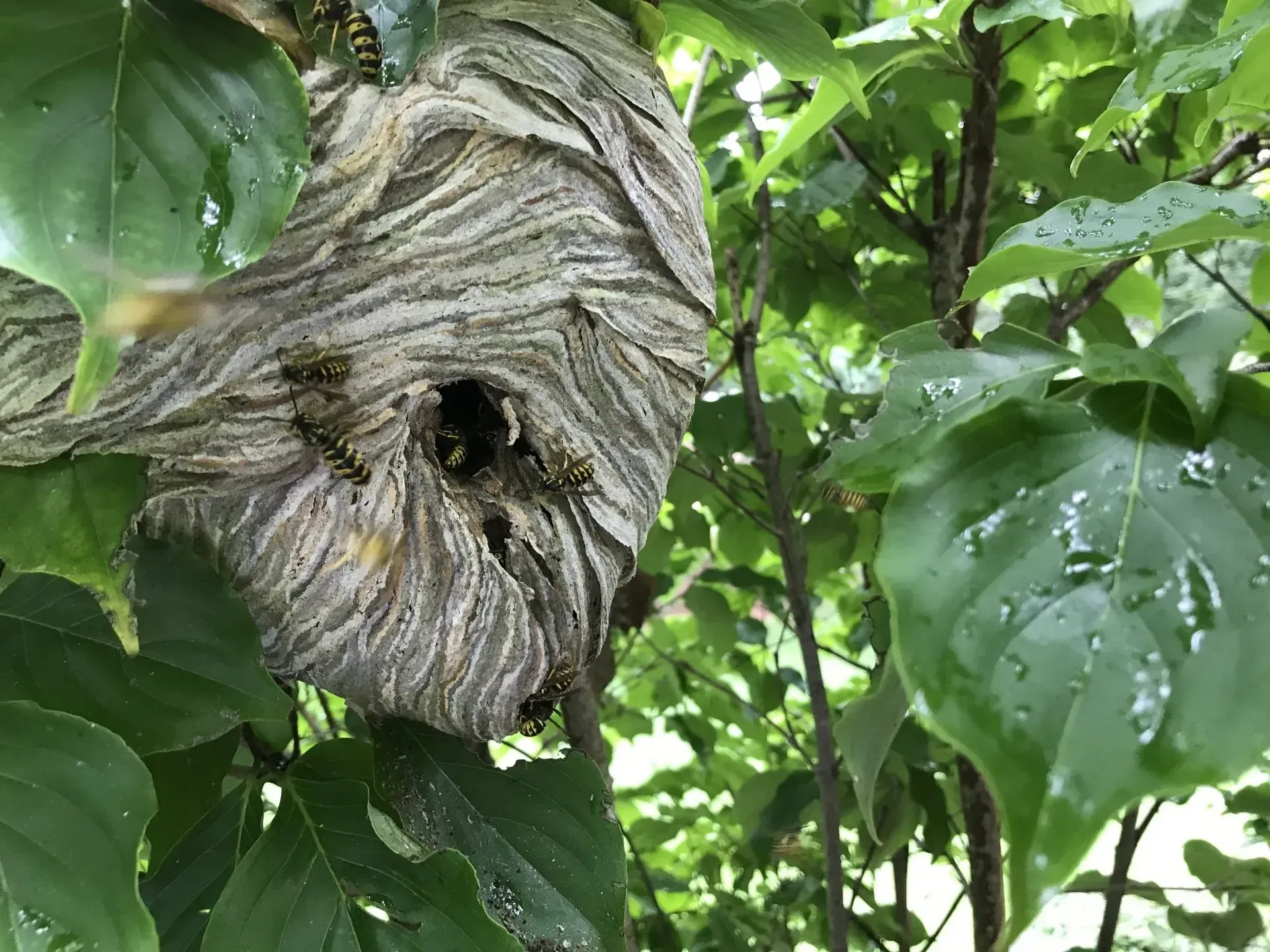

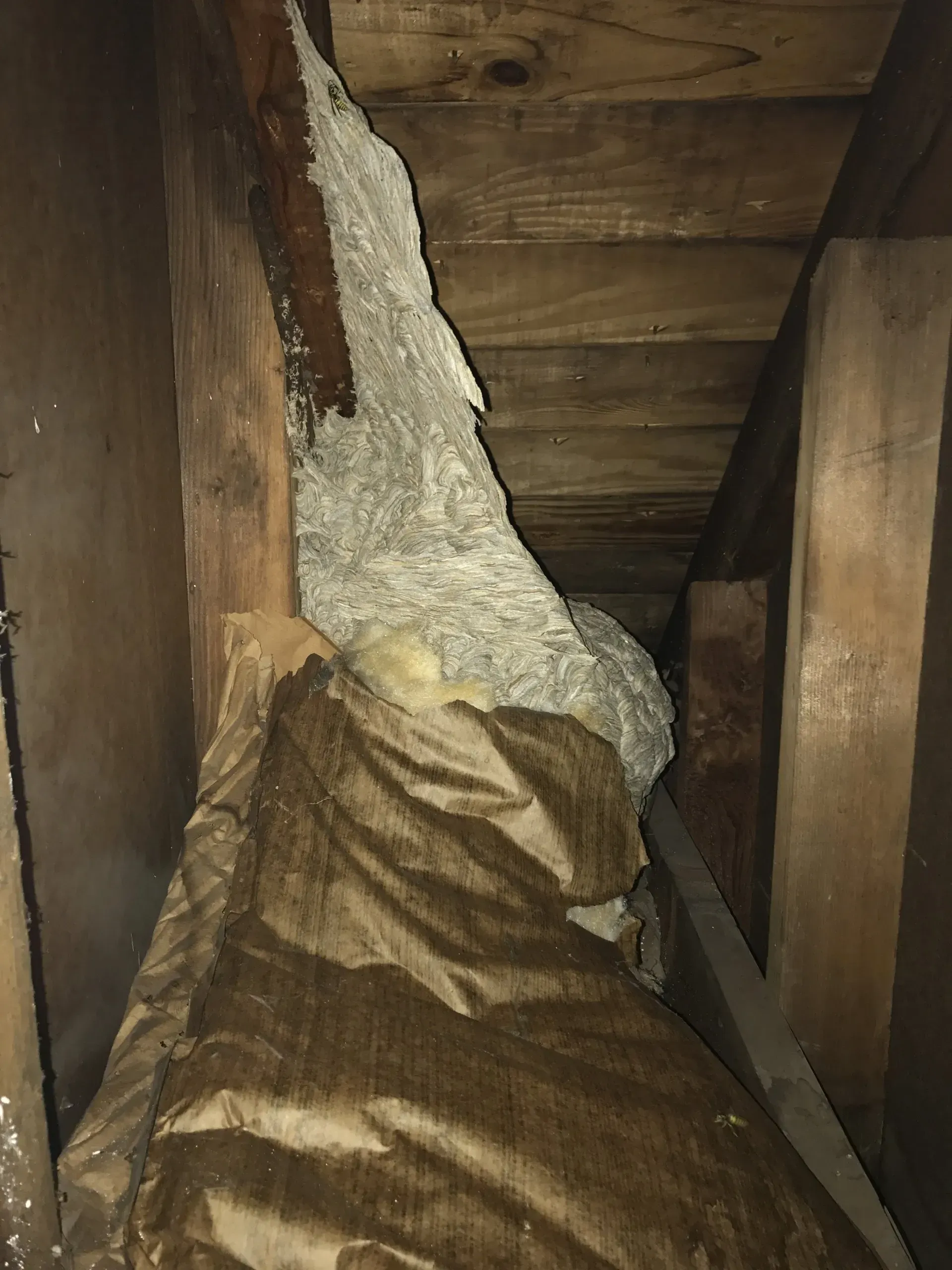
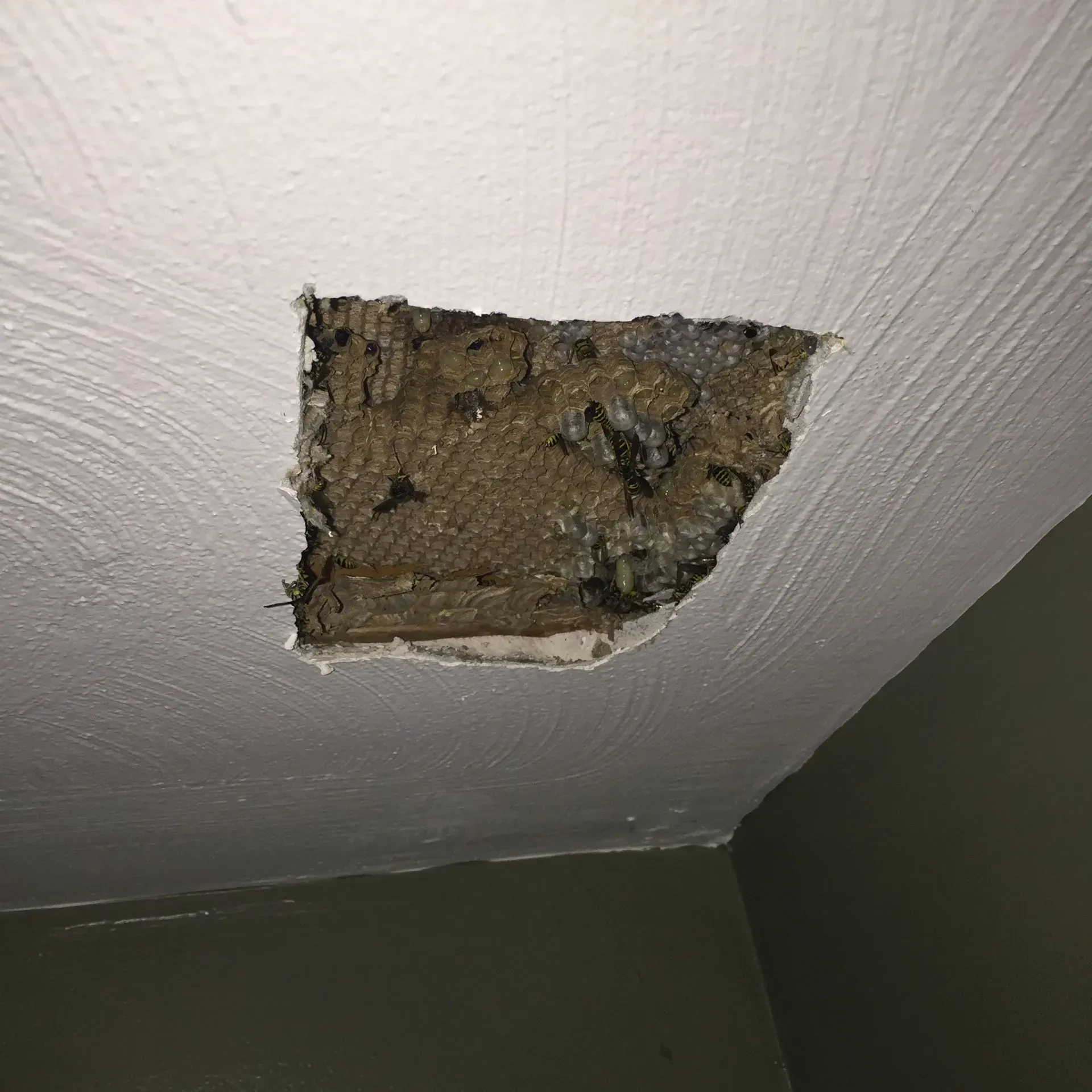
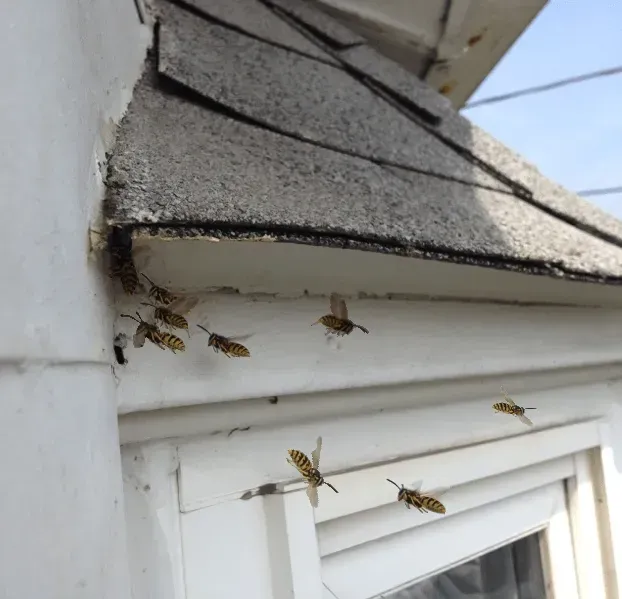
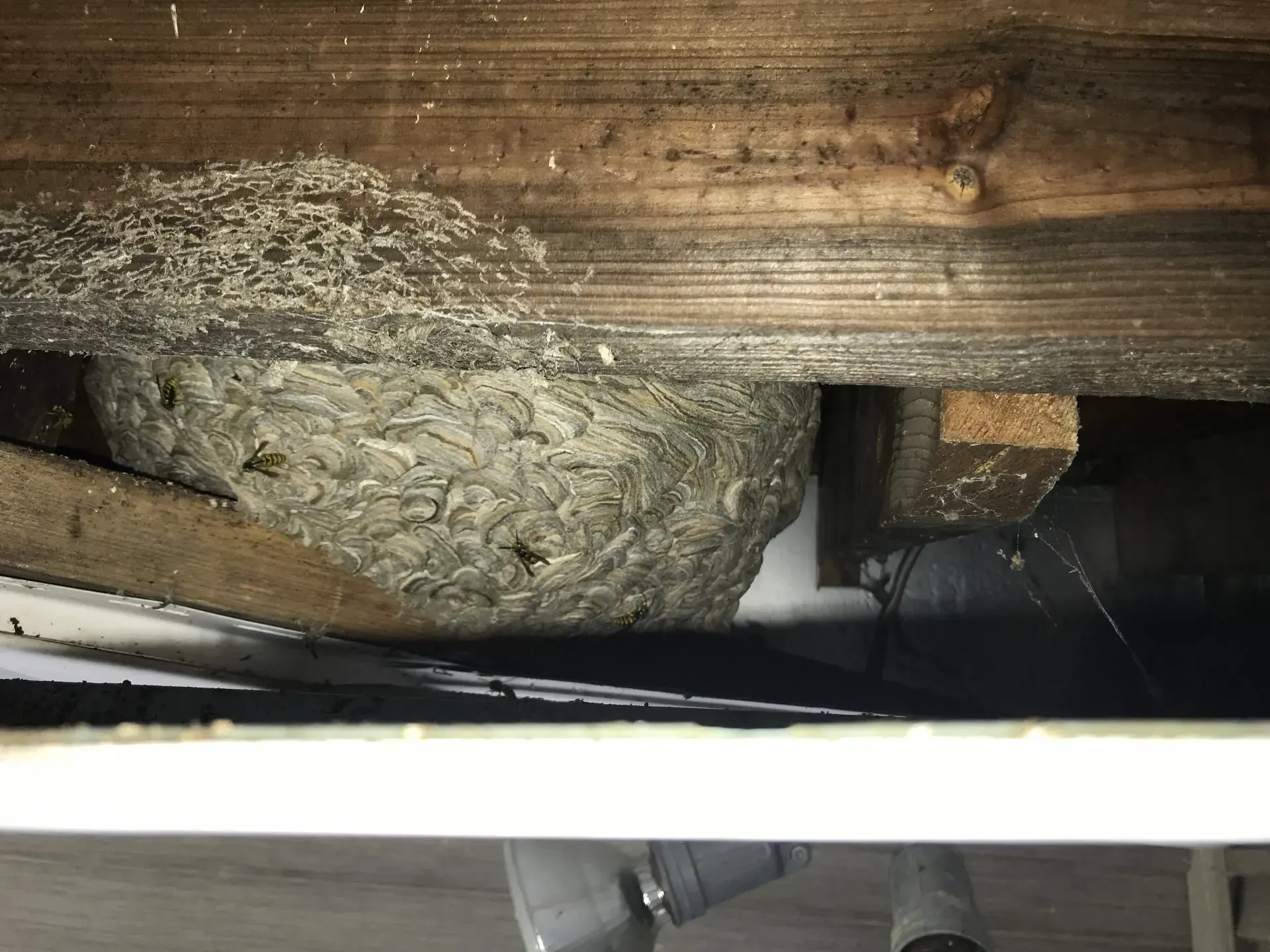

Share On: